Mega Mingiedi Tunga est un artiste plasticien pluridisciplinaire né à Kinshasa (République démocratique du Congo) qui vit et travaille à Paris (France).
Il emploie des collages, des dessins, des installations ou des performances dans son œuvre. L’espace urbain est au coeur de son travail, avec des cartographies imaginaires qui expriment des faits sociaux réels sur des thèmes comme la mobilité, l’influence de l’économie, la mort, la foi, l’homosexualité et la religion. Selon lui, « ce n’est pas le rôle de l’artiste de construire la ville, mais plutôt de témoigner, dénoncer le mal et porter les gens à réfléchir de manière positive. » Son travail a fréquemment pour élément central la capitale de Kinshasa.
Cofondateur du collectif EZA-POSSIBLES, il a été récemment exposé dans des expositions collectives à Paris (galerie André Magnan et Reid Hall de la Columbia University de Paris) en 2025, à Bruxelles (K1,KANAL-Centre Pompidou) en 2022, à La Chaufferie à Strasbourg (2021), à la Biennale de Lubumbashi (2019), au Grassi Museum de Leipzig (2019) ou à Kinshasa (2017). Représenté par la galerie André Magnan et les ateliers des artistes en exil, il a également intégré plusieurs collections publiques dont celle de l’Africa Museum à Tervuren.
Mega Mingiedi Tunga is a multidisciplinary visual artist born in Kinshasa (Democratic Republic of Congo) who lives and works in Paris (France).
He uses collages, drawings, installations and performances in his work. Urban space is at the heart of his work, with imaginary cartographies that express real social issues on themes such as mobility, the influence of the economy, death, faith, homosexuality and religion. According to him, "it is not the role of the artist to build the city, but rather to bear witness, denounce evil and encourage people to think positively." His work frequently focuses on the capital city of Kinshasa.
Co-founder of the EZA-POSSIBLES collective, he has recently been featured in group exhibitions in Belgium, at K1 (KANAL-Centre Pompidou) in 2022, La Chaufferie in Strasbourg (2021), the Lubumbashi Biennale (2019), the Grassi Museum in Leipzig (2019) and Kinshasa (2017). His work has also been included in several public collections, including that of the Africa Museum in Tervuren.
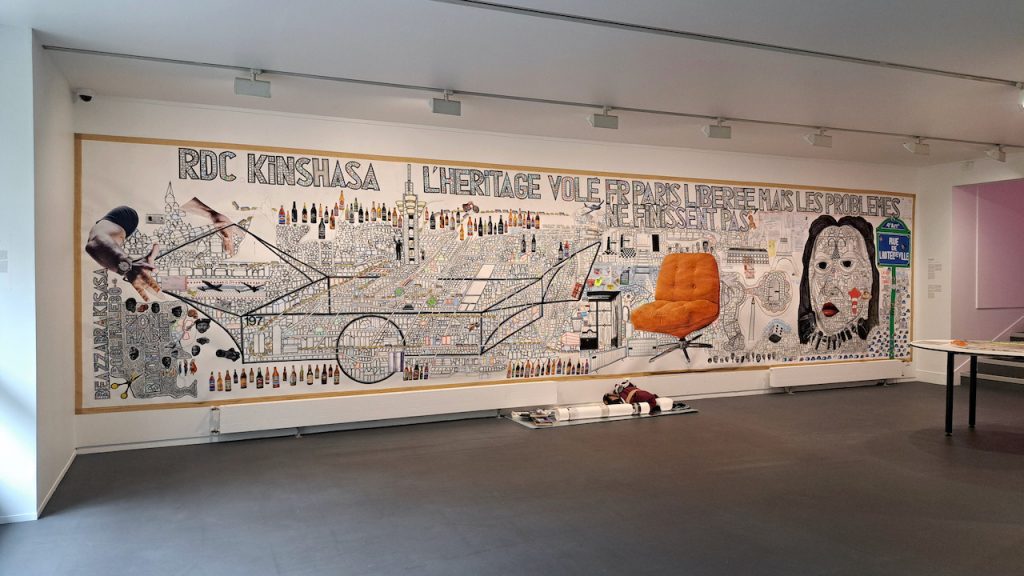
Dans cette œuvre à mi-chemin entre cartographie visuelle, imaginaire et engagement politique, Mega Mingiedi entremêle les géographies artistiques, diplomatiques, éducatives, linguistiques et politiques de Kinshasa et de Paris. L’artiste y projette un regard critique sur l’histoire, les migrations, les inégalités urbaines et les systèmes de pouvoir qui structurent ces deux capitales, à partir de son expérience personnelle.
Au centre, le pousse-pousse incarne Kinshasa : à la fois outil de débrouille, vestige colonial belge et symbole d’un système économique précaire. La ville est figurée comme un cœur battant, saturé de flux, marqué par l’absence de l’État et les exils forcés. Autour se déploient des figures politiques de la République démocratique du Congo, des papiers d’asile rejetés, et des objets du quotidien révélant une critique sociale acérée. Parmi ces derniers, l’artiste choisit d’encercler la ville de Kinshasa par des collages de bière car celle-ci vient de l’héritage belge et traduit une véritable volonté politique : “donnez-leur la bière, ils ne vont plus réfléchir”.
Face à Kinshasa, Paris se dévoile autrement : non pas sous forme de plan, mais à travers des lieux symboliques ainsi que des fragments de vie précaire. Par exemple, Mega Mingiedi dessine en fond toute la ligne du RER B puisqu’elle donne accès à l’aéroport Paris-Charles de Gaulle et, par conséquent, au monde entier. Si la Ville Lumière incarne pour certains une promesse, elle apparaît ici cloisonnée, administrative, faite de barrières visibles et invisibles.
Paris est ici incarnée par la présence de la plaque de la rue de la Cité internationale des arts, à côté d’une femme entourée de microphones. Cette dernière est telle une politicienne interviewée, et représente le phénomène féministe qui selon l’artiste caractérise le projet des Scénos Urbaines et la mentalité parisienne.
Mega Mingiedi, père de famille, chercheur, artiste, mais également demandeur d’asile, compose une carte politique et poétique où l’art devient lutte. Il convoque l’histoire du « combat du siècle » entre Muhammad Ali et George Foreman en 1974 à Kinshasa, aux luttes féministes parisiennes pour rappeler que les villes ne sont pas neutres. Elles sont façonnées par celles et ceux qui y vivent, y survivent, et résistent : « Si on ne s’occupe pas de la politique, la politique s’occupera de nous. »
In this work, which lies at the crossroads of visual cartography, imagination, and political engagement, Mega Mingiedi weaves together the artistic, diplomatic, educational, linguistic and political geographies of Kinshasa and Paris. The artist casts a critical perspective on history, migration, urban inequality, and the power structures shaping both capitals, based on his personal experience.
At the center, the handcart symbolizes Kinshasa: at once a tool of resourcefulness, a relic of Belgian colonialism, and a symbol of a precarious economic system. The city is portrayed as a beating heart, saturated with flows, marked by the absence of the state and by forced exiles. Surrounding it are depictions of political figures from the Democratic Republic of Congo, rejected asylum papers, and everyday objects that reveal a sharp social critique. Among these, the artist chooses to encircle the city of Kinshasa with beer labels, referencing both Belgian colonial legacy and a clear political intent: "give them beer, they will stop thinking."
In contrast, Paris is represented differently: not as a map, but through symbolic places and fragments of precarious life. For instance, Mega Mingiedi draws the entire RER B line in the background, as it leads to Paris-Charles de Gaulle Airport, and thus, to the whole world. While the City of Light may symbolize promise for some, here it appears compartmentalized, bureaucratic, and filled with both visible and invisible barriers.
Paris is embodied through the image of a street sign for the Cité internationale des arts, placed next to a woman surrounded by microphones. She appears like a politician being interviewed and represents the feminist movement which, according to the artist, characterizes both the Scénos Urbaines project and the Parisian mindset.
Mega Mingiedi, father, researcher, artist, and also asylum seeker, composes a political and poetic map where art becomes a struggle. He calls upon history from the “Fight of the Century” between Muhammad Ali and George Foreman in 1974 in Kinshasa to feminist struggles in Paris to remind us that cities are not neutral. They are shaped by those who live in them, survive in them, and resist them: “If we don’t take care of politics, politics will take care of us.”
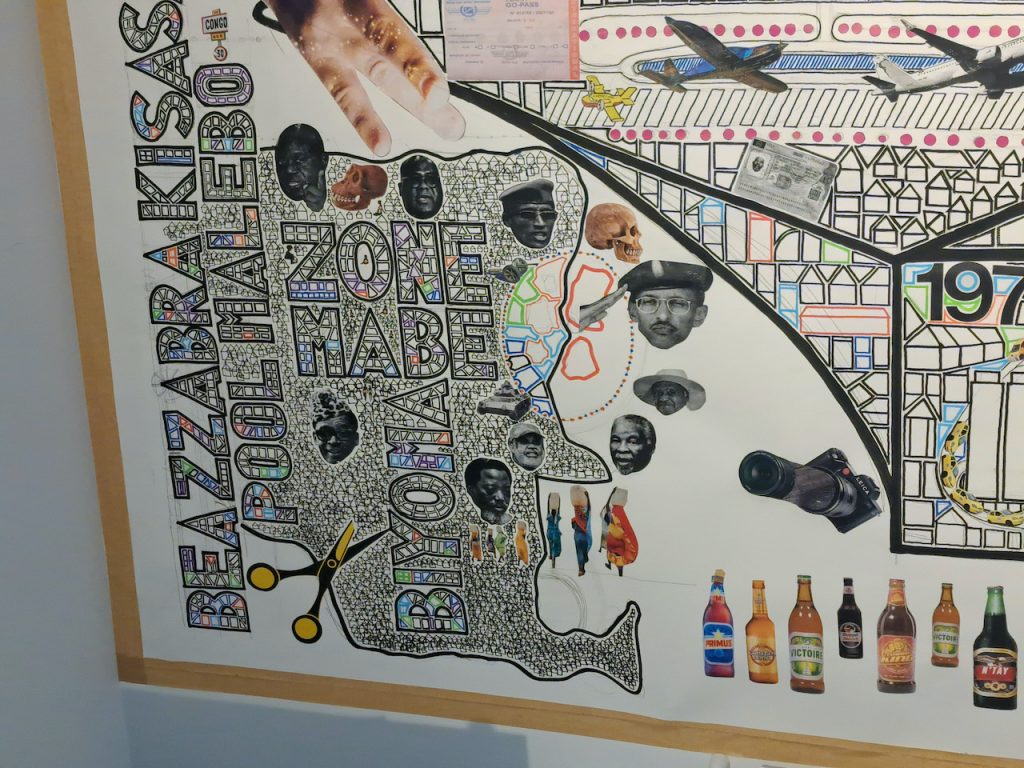
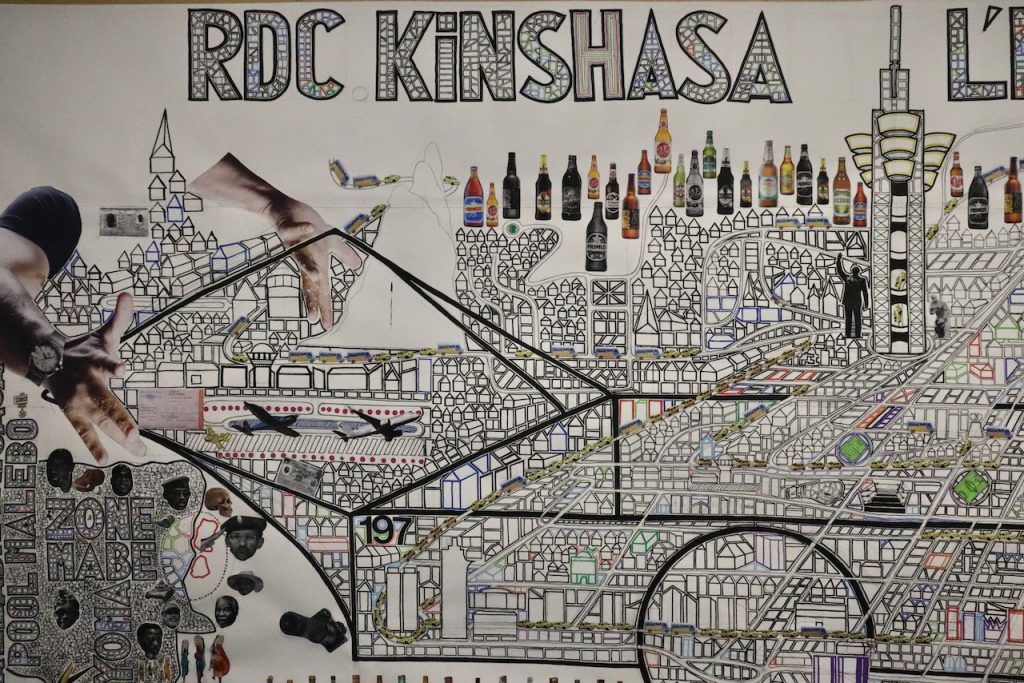

Lors du vernissage, Mega Mingiedi propose une performance en écho à son œuvre : un combat de boxe en solitaire. Sur ce ring symbolique (le dessin), il affronte les injustices qu’il dénonce, racisme, inégalités, discriminations, violences sociales. Pour l’artiste, ce combat est une « thérapie », un prolongement de son dessin devenu champ de bataille. Héritier des performances menées à Kinshasa pour reconnecter l’art à la rue, Mega Mingiedi rappelle ici que la ville elle-même est un terrain de lutte, d’expression et de transformation.
At the exhibition’s opening, Mega Mingiedi presents a performance echoing his work: a solo boxing match. In this symbolic ring (the drawing), he confronts the injustices he denounces; racism, inequality, discrimination, social violence. For the artist, this fight is a “therapy,” an extension of his drawing turned battlefield. As a successor to performances staged in Kinshasa to reconnect art with the street, Mega Mingiedi reminds us that the city itself is a space for struggle, expression, and transformation.

with Androa Mindre Kolo
Androa Mindre Kolo & Mega Mingiedi / Ciboulette & Poisson / Dakar 2013 from Urban Scénos on Vimeo.
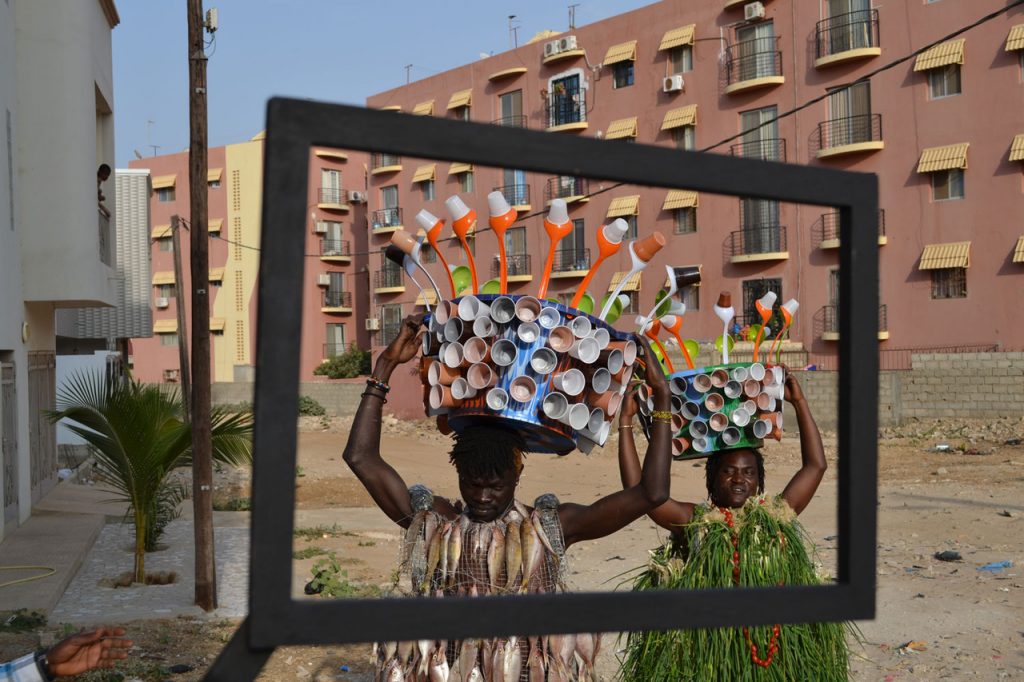
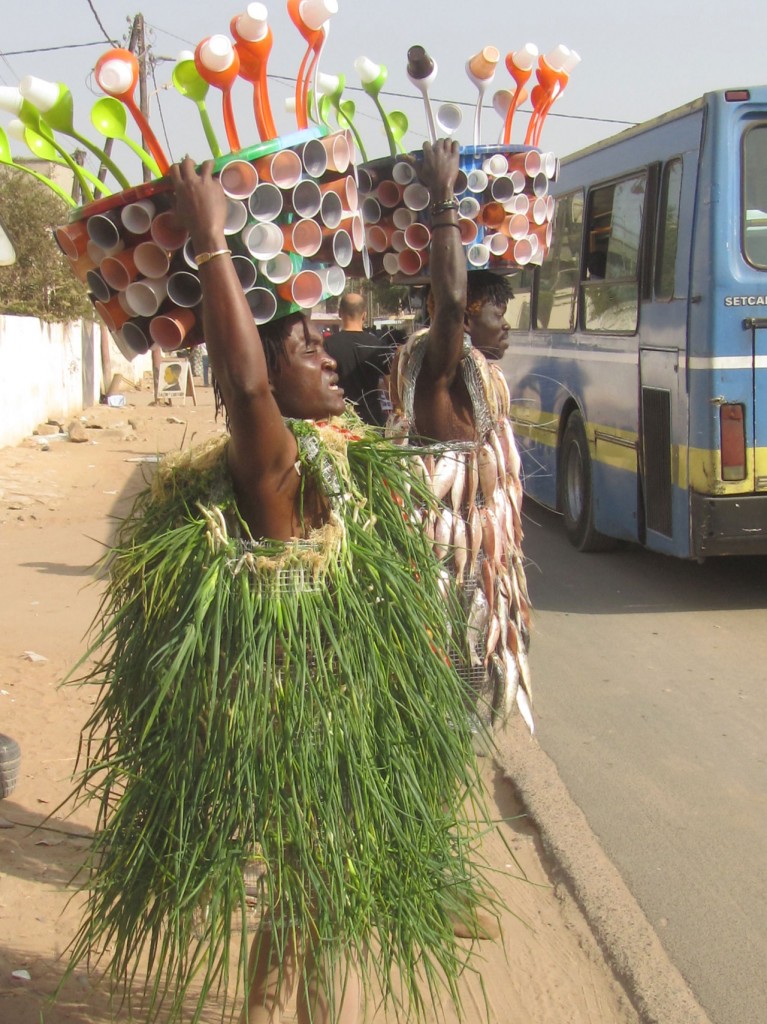

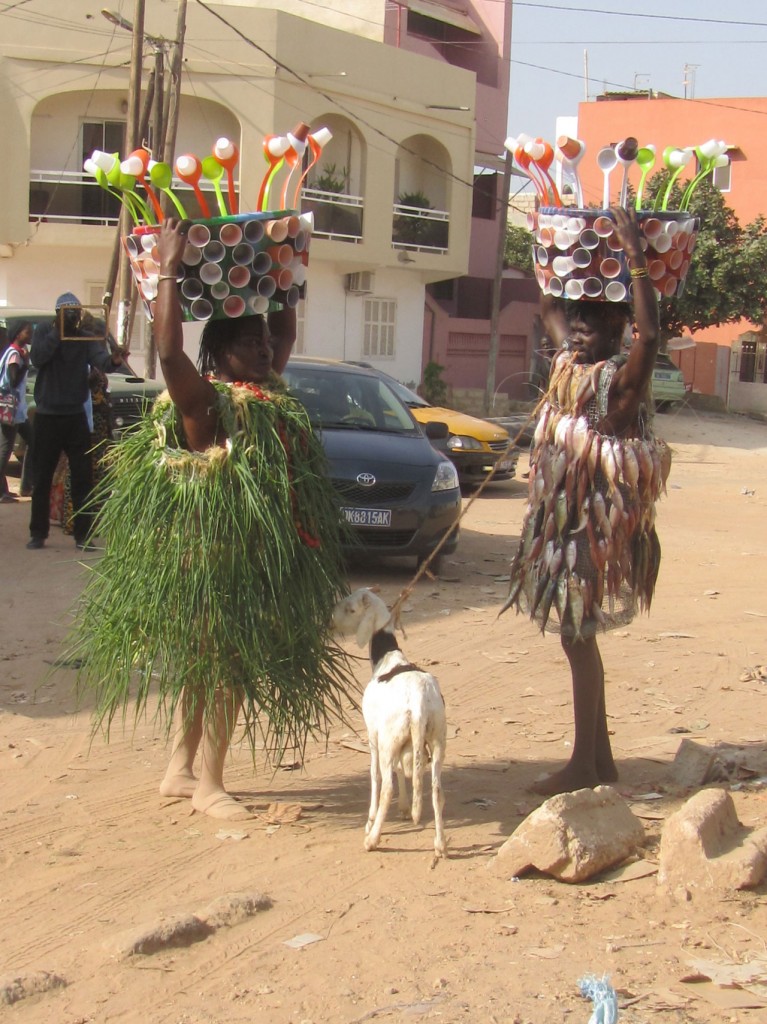
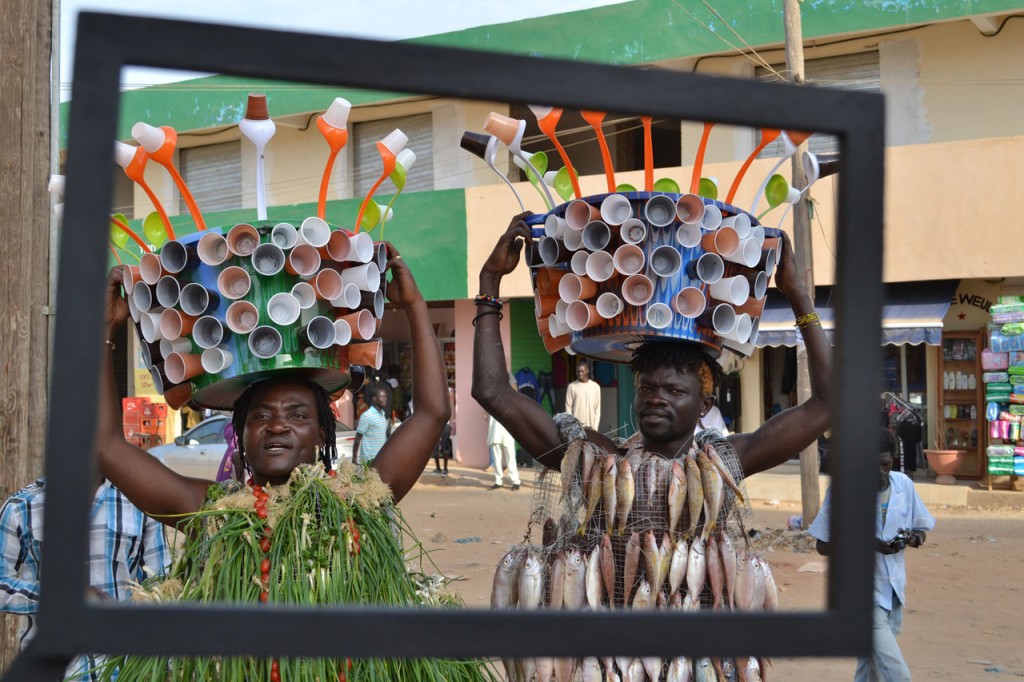
En robe de ciboulette et en robe poisson


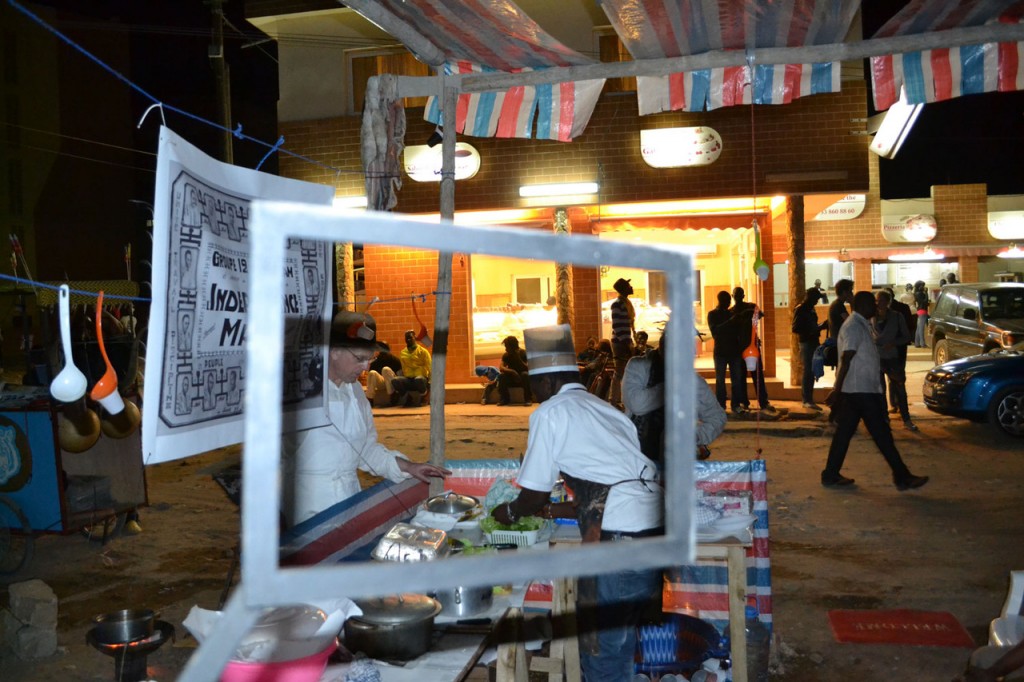


Malewa
Qui veut dire en lingala, langue nationale congolaise, Les petits restaurants aux coins de rue à Kinshasa et leurs produits: resto de 8 à 12 places, avec en cuisine Mega Mingiedi, Androa Mindre Kolo, Papy Ebotani, Patrick Gufflet, …

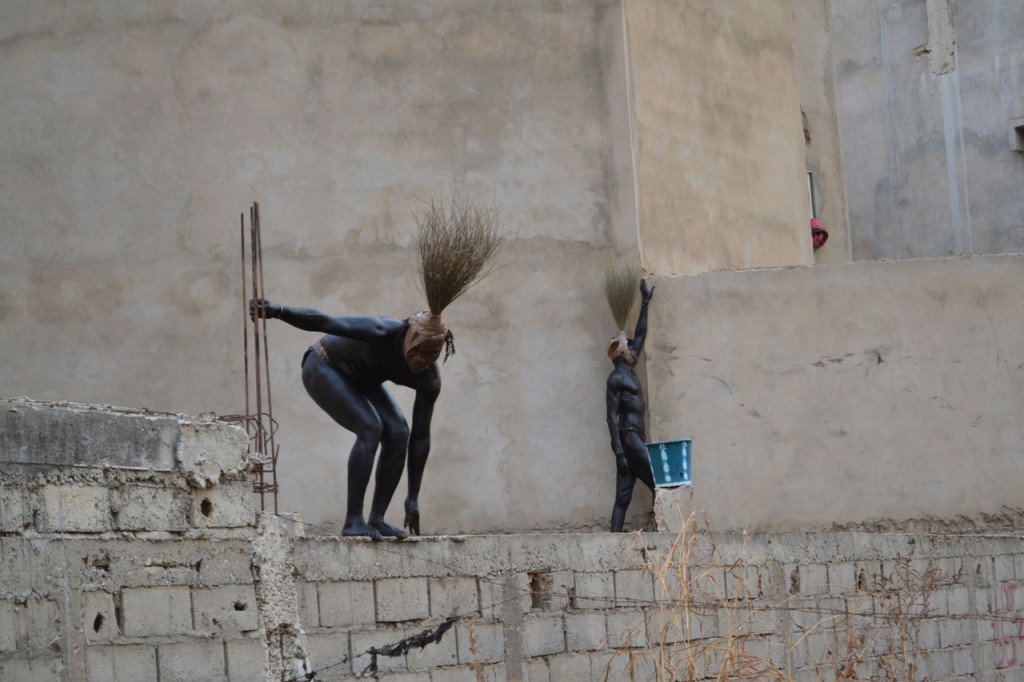

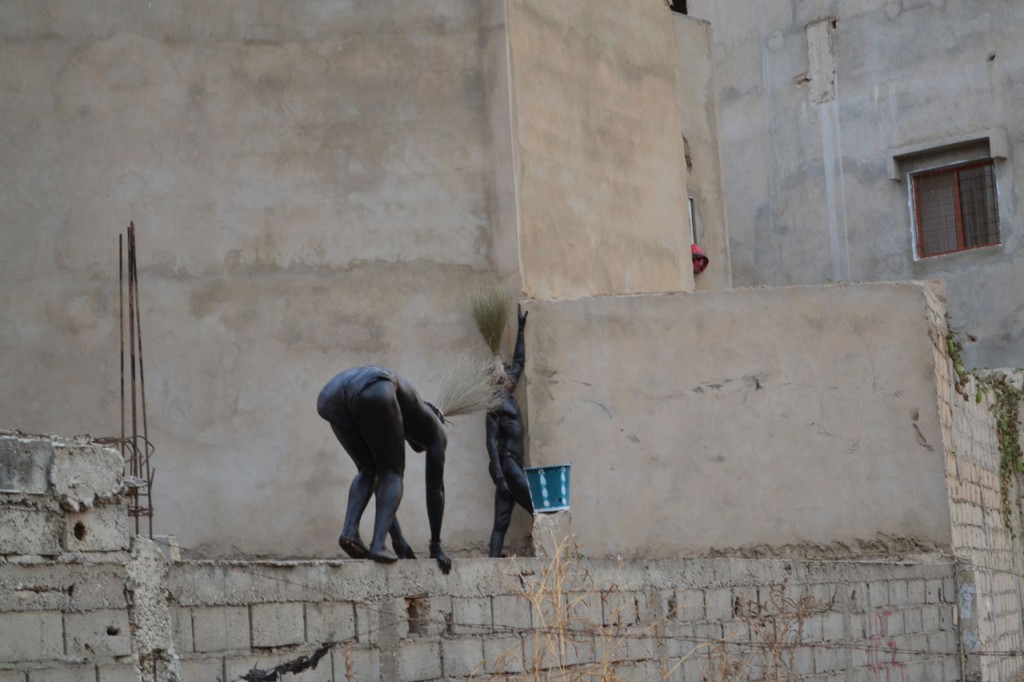
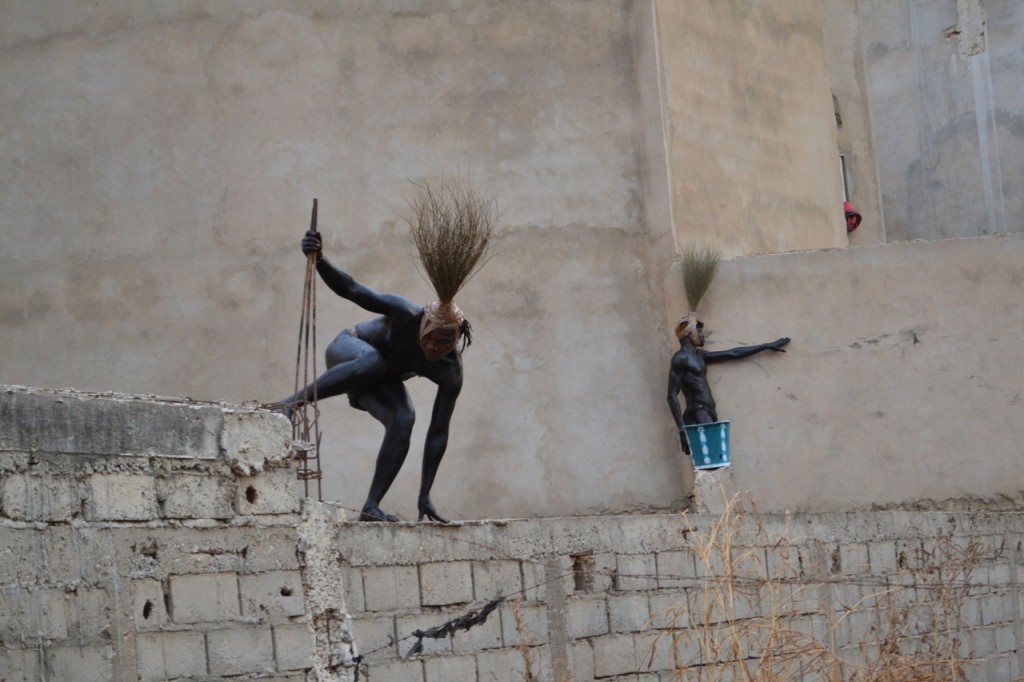


Performance avec Androa Mindre Kolo
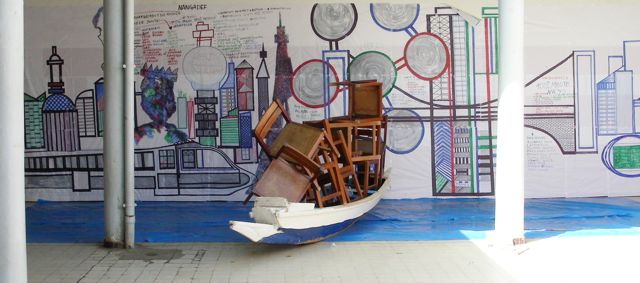
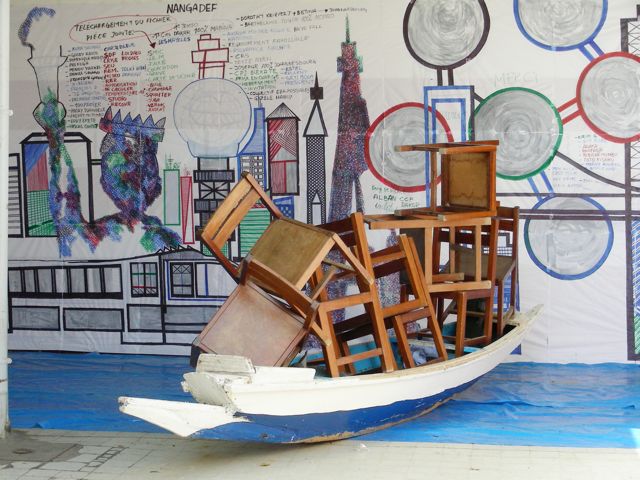


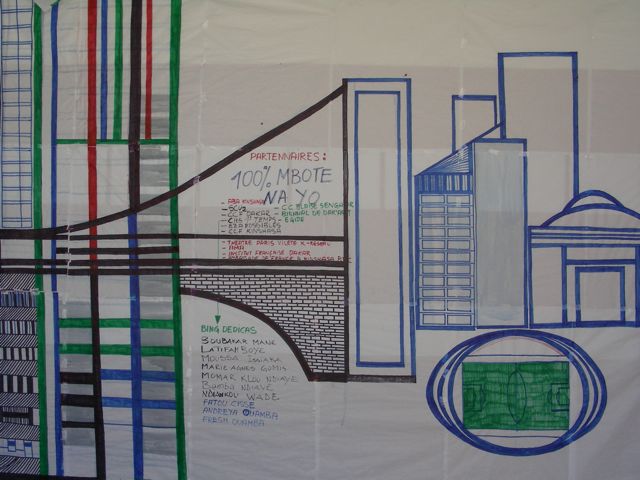
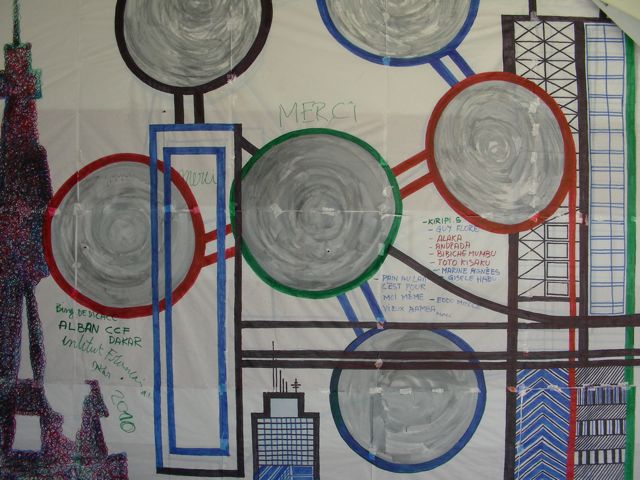

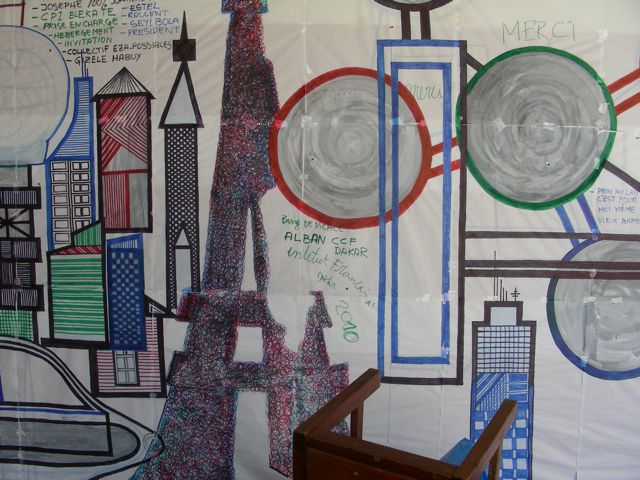
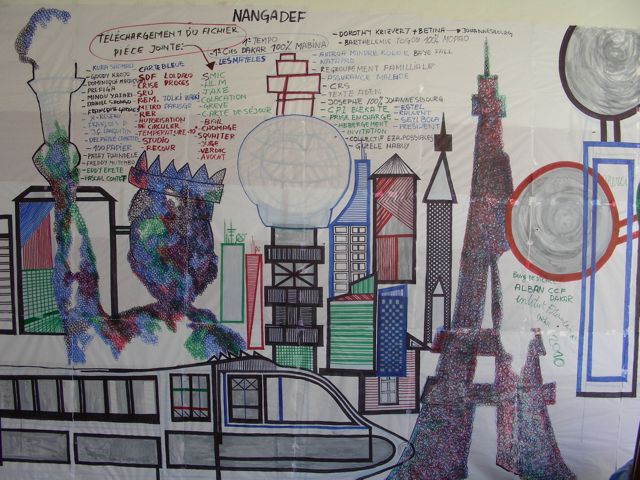
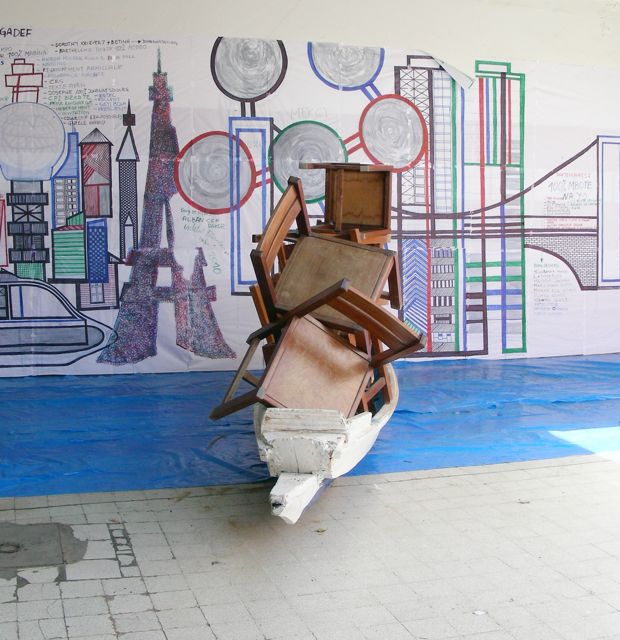

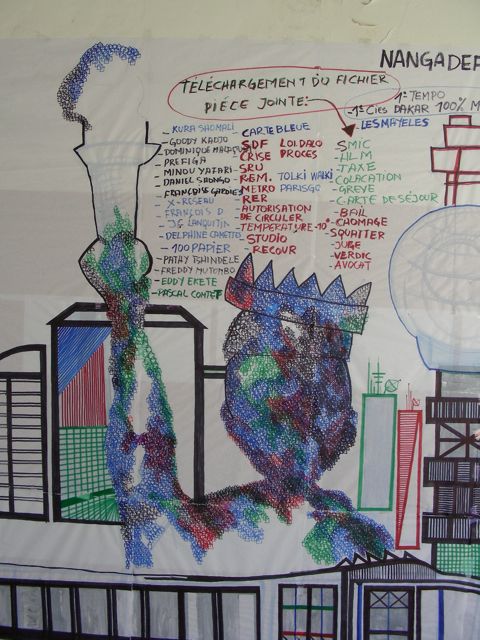
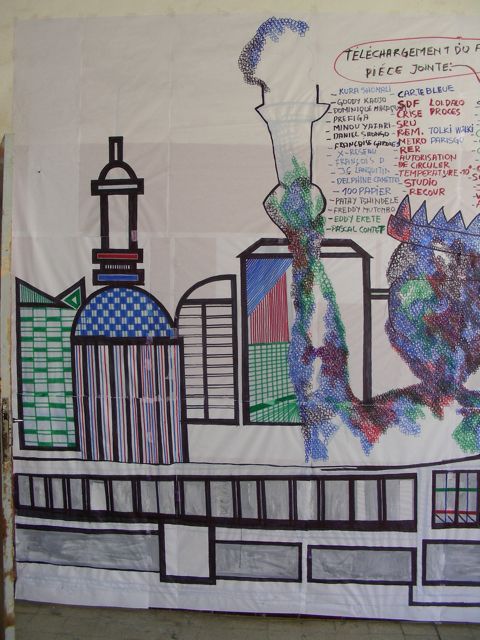
installation in the Blaise Cendras Cultural Center
URBAN SCÉNOS LABELLEVIRTUELLE 2010




<<RR=FF>> THÉÂTRE PARIS-VILLETTE 2009
URBAN SCÉNOS JOHANNESBURG 2009
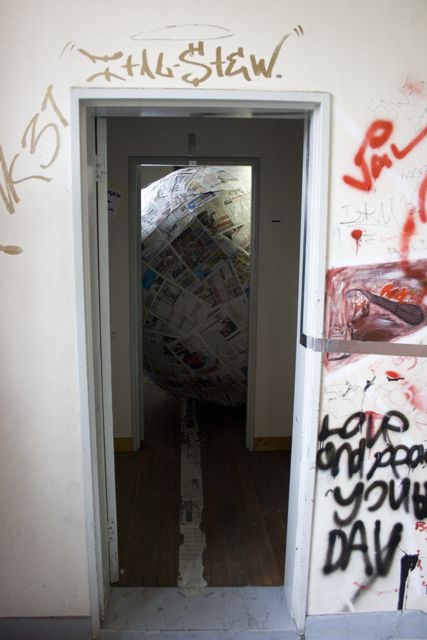
« Lelo awa » (Installation)
Mega Mingiedi worked obsessively in his room at the Drill Hall, slowly turning it into a wall drawing/installation, “Lelo Awa”, which commented on the outside world (the project in it’s first version was for outside, and within one night he turned it in an inside project), experiences and impressions gathered during his stay. Drawing on his interest in soccer and the impact of the World Cup, the installation included the construction of a large ball, which was covered in newspaper articles and played with the volume of the rooms dimensions. Mingiedi distilled extracts from this diary-like treatment of the walls (both commentary and record) into 3 drawings which were displayed during the Art Fair.
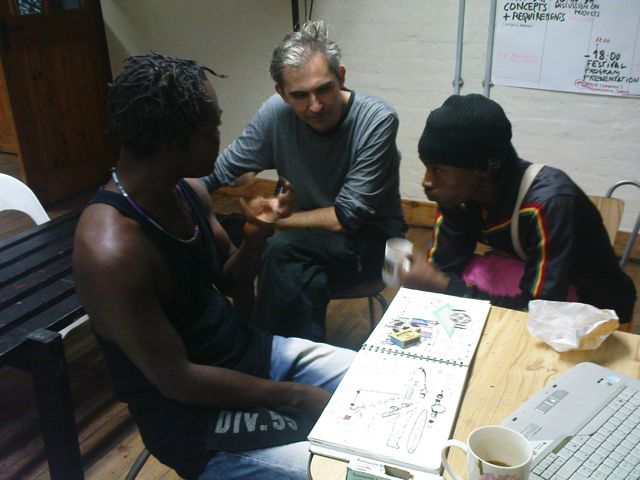
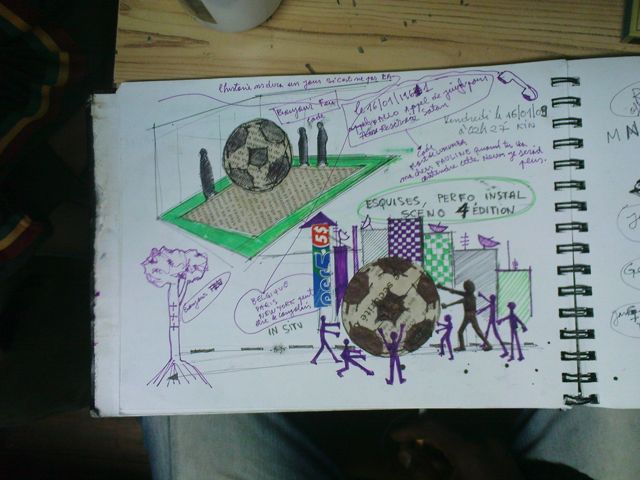

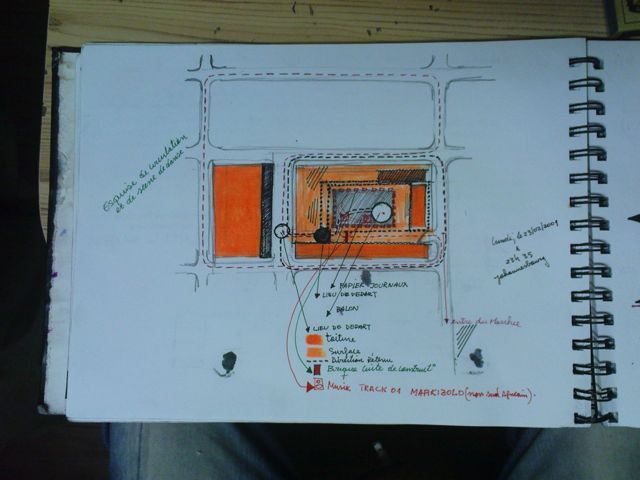
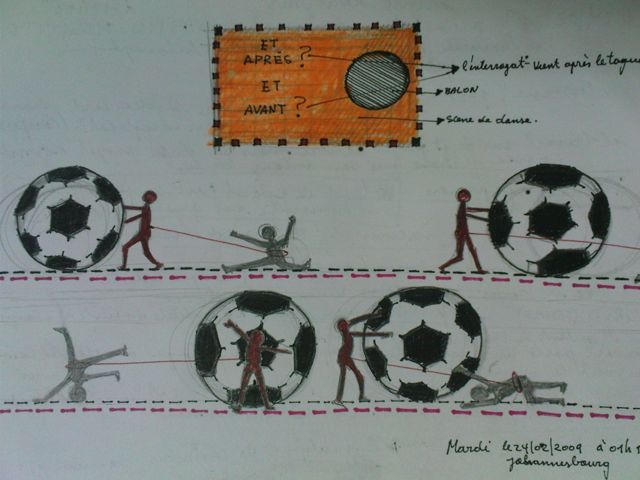
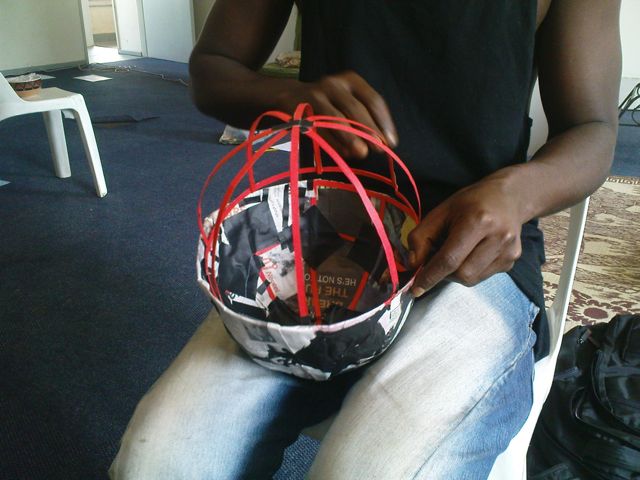

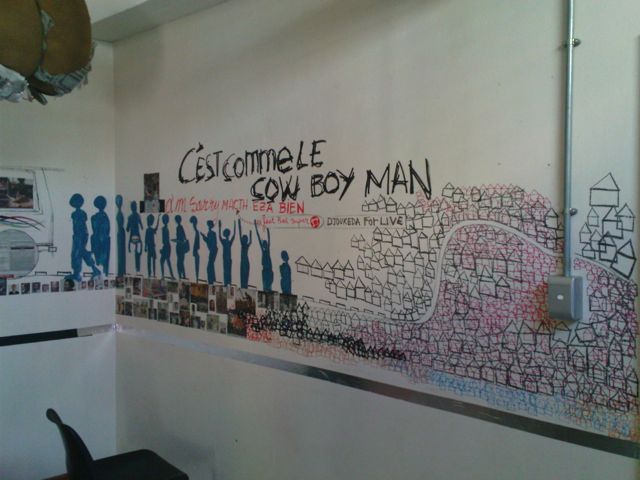

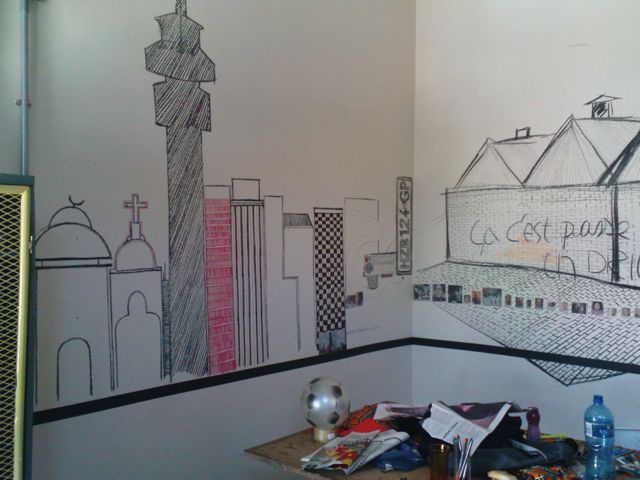
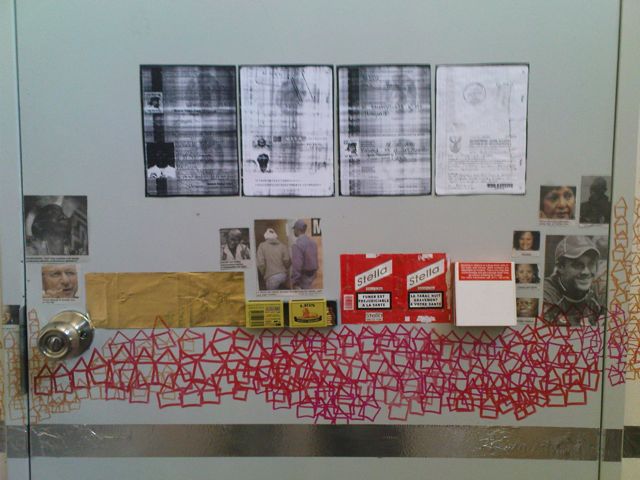

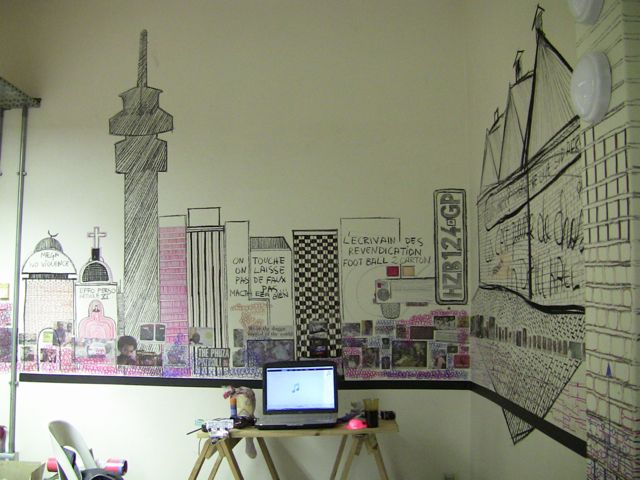
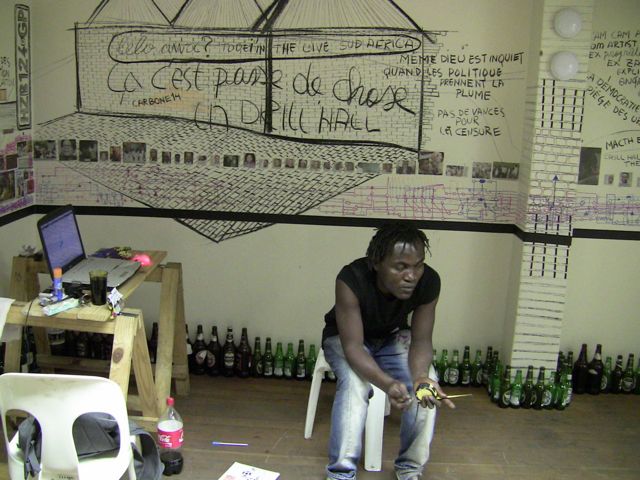
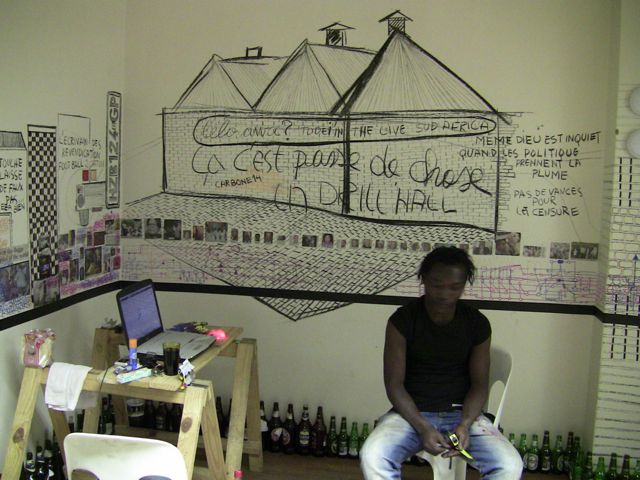


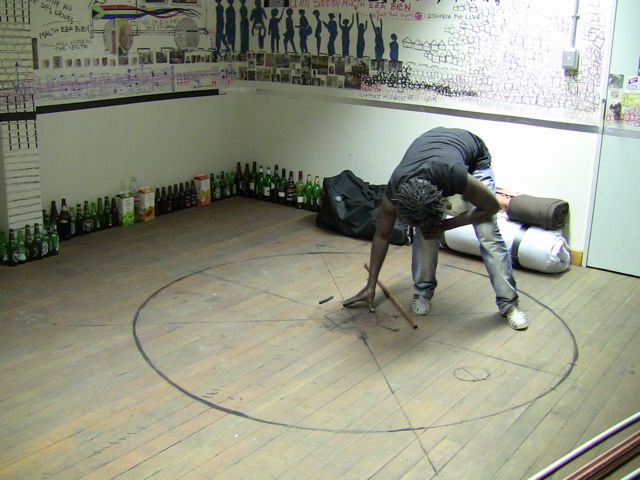
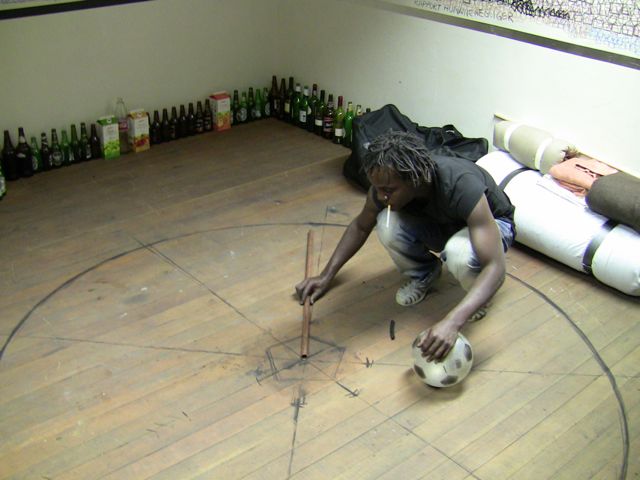


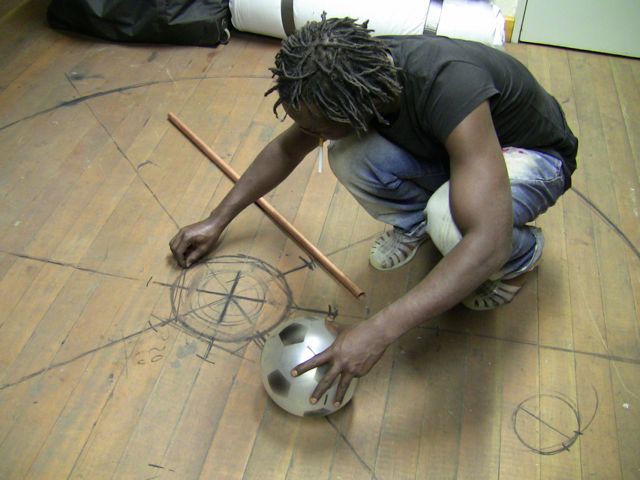


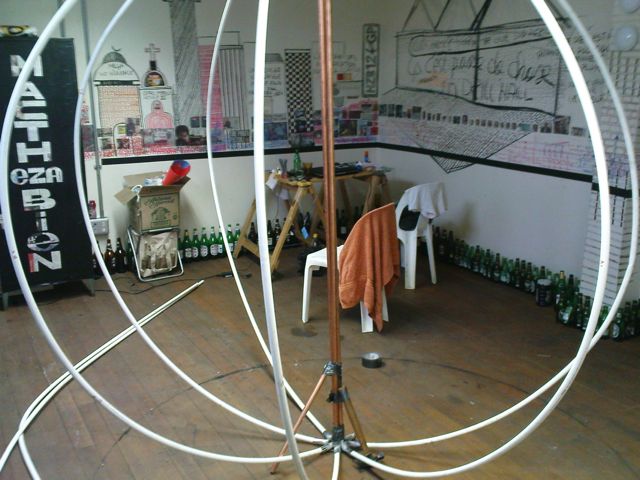
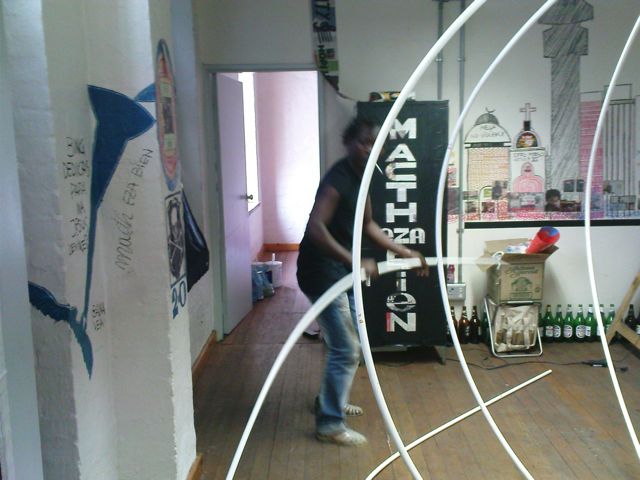
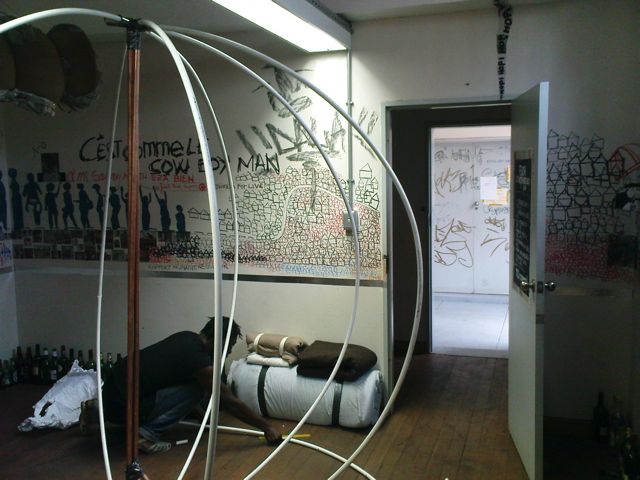


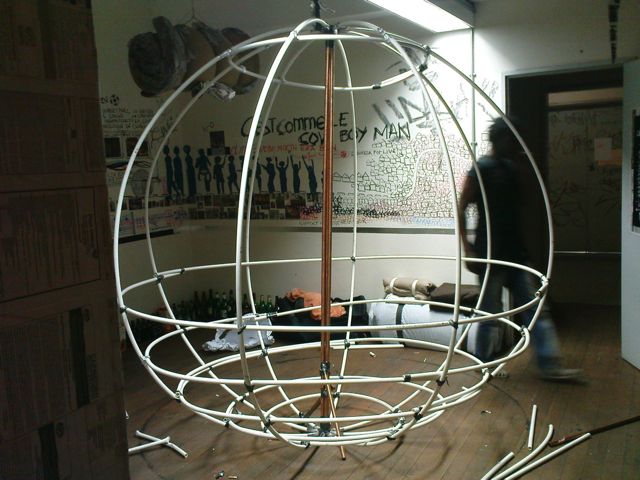
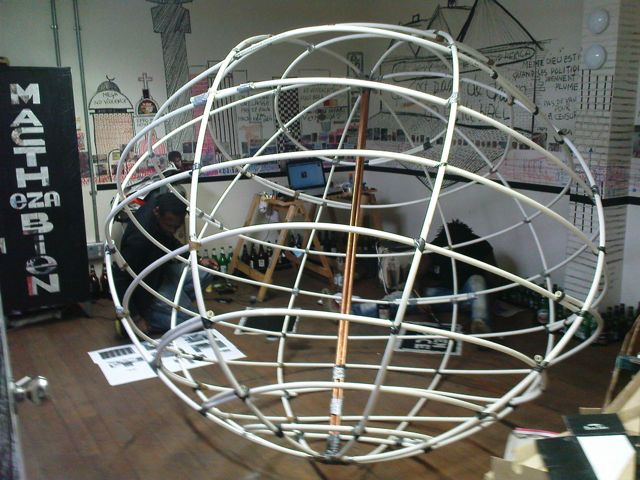


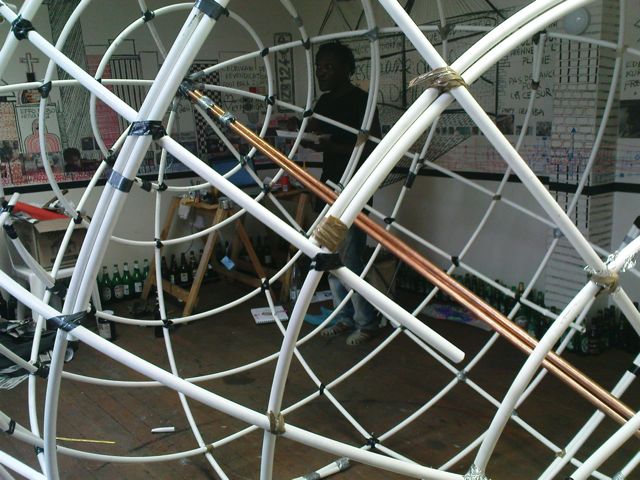

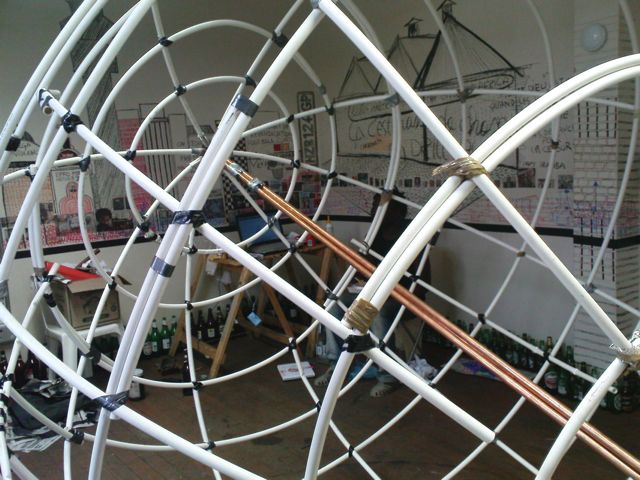

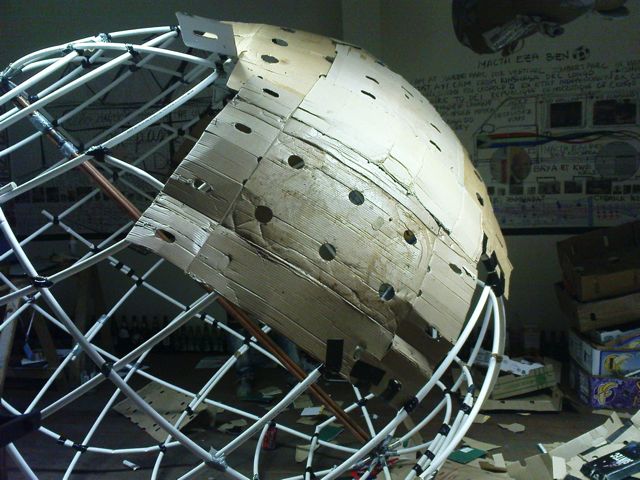



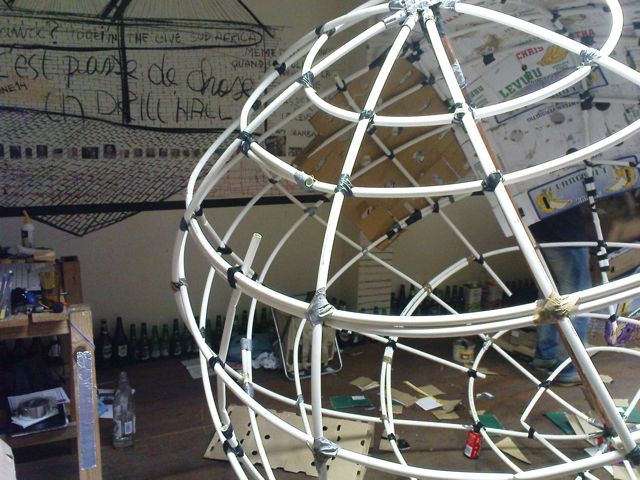
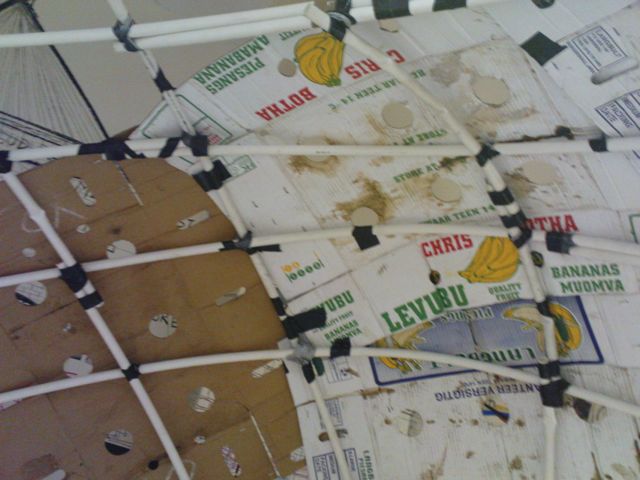


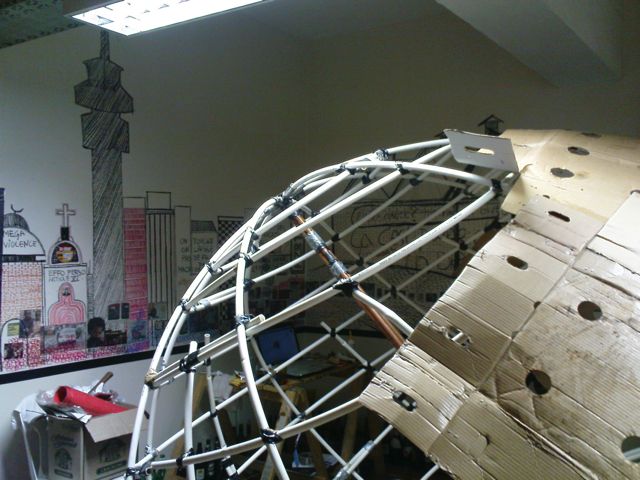

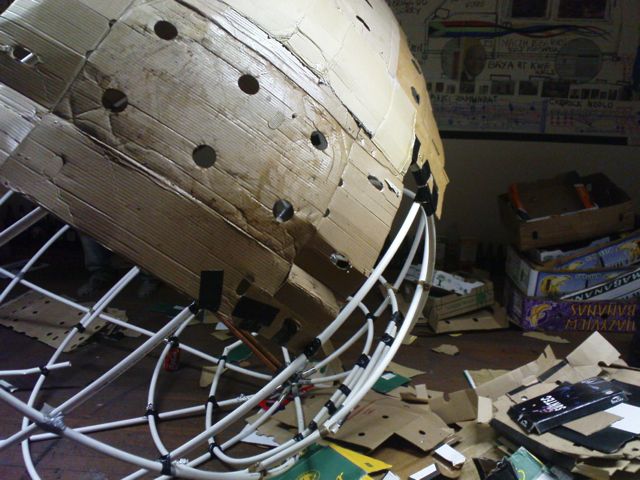
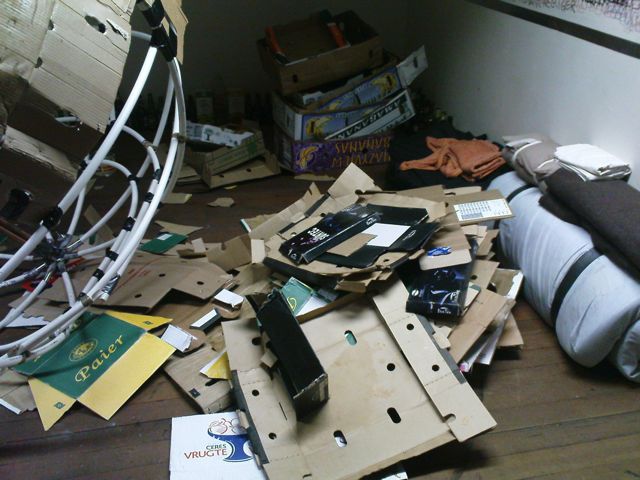
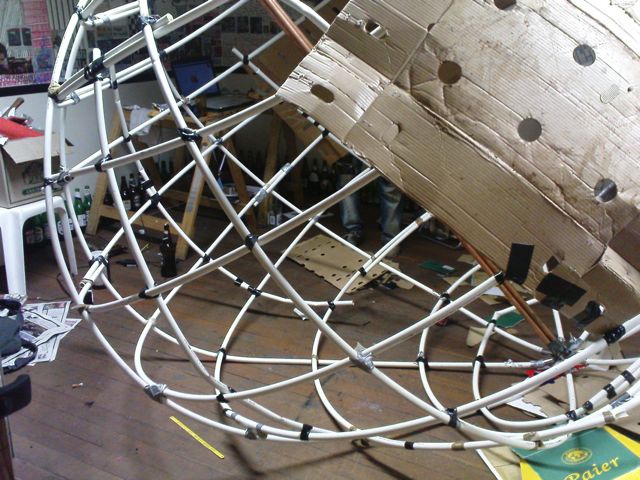
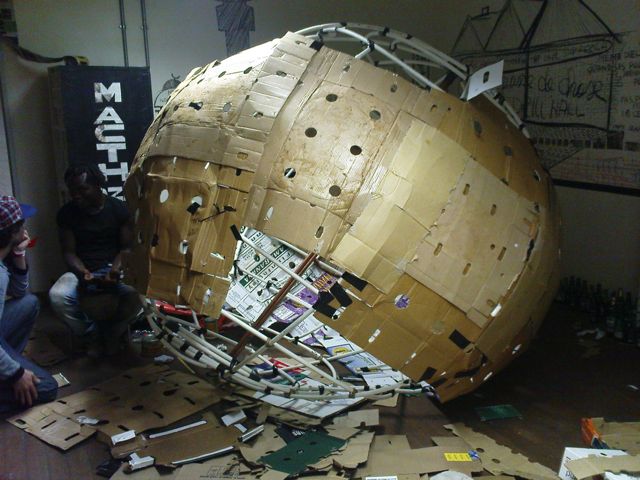



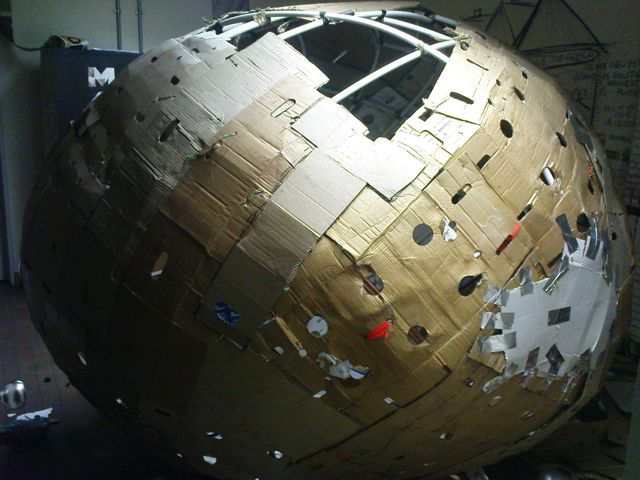
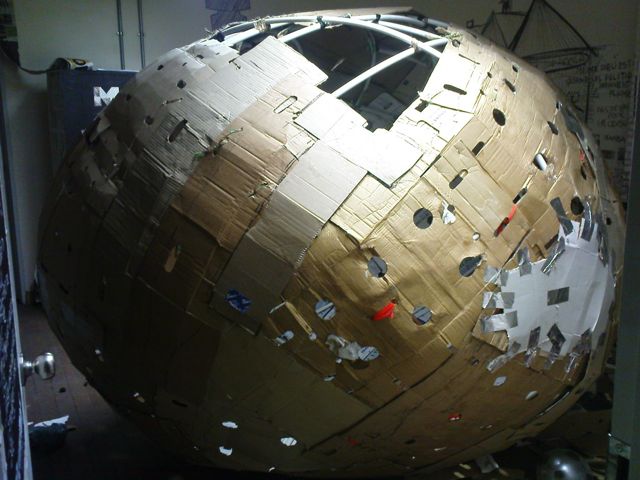



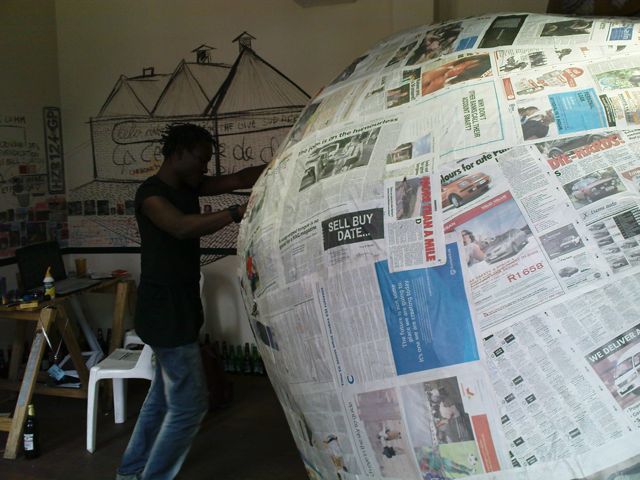

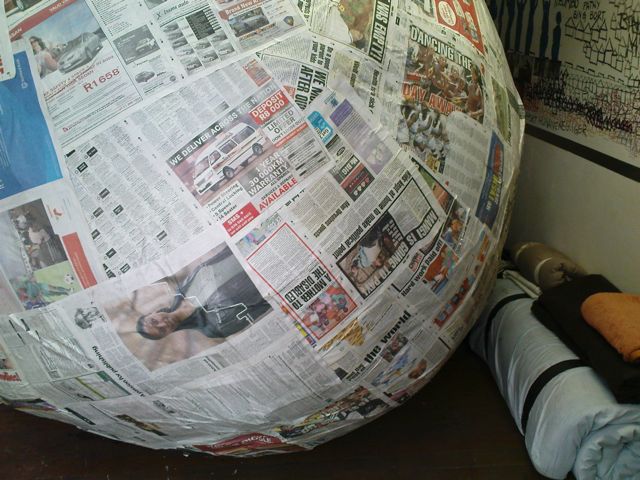

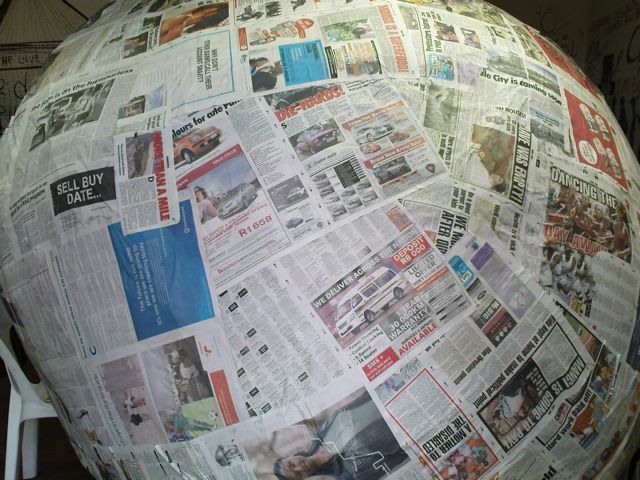
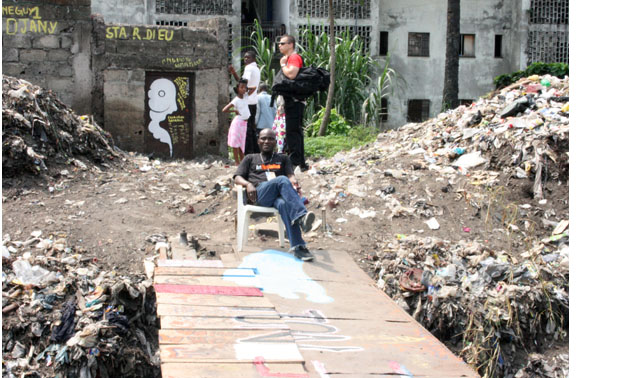
Mega fait partie du collectif Eza possibles et a beaucoup œuvré avant et pendant la résidence aux relations avec les habitants et relais du quartier. Mega s’est emparé du problème d’un pont inachevé pour en faire un acte d’artiste. Les gens devaient faire un détour car ce pont, le long de l’avenue Attente au dessus de la rivière de la Gombé, commencé sur les fonds propres d’un notable du quartier, n’avancait pas faute de fonds. Mega aidé par Eddy Ekete et les habitants ont achevé le pont. En même temps ils ont « recyclé » une partie des déchets environnants (une montagne), sous la forme d’une installation de chaussures usagées. Lorsque les officiels de l’ambassade de France sont venus visiter le site, Mega les attendait assis sur une chaise au milieu du pont. Il y a ici une manière de s’emparer de la réalité matérielle dans toutes ses composantes et de s’en servir pour poser des actes d’artistes qui fassent sens, qui est au coeur du projet des scénographies urbaines. La construction du pont a été très suivie et unanimement saluée par les habitants du quartier. // Mega is member of Eza Possibles and he made a lot before and during the residency, for the relationships with inhabitants of the area. He took over the problem of an unfinished bridge to turn it into an artist action. People had to walk a long curve because this bridge, along the Attente avenue and upon the Gombé river, which had been started with the personnal funds of a notable of the area, whas not going on because of lack of fundings. Mega, with the support of Eddy Ekete and of inhabitants, ended the bridge. At the same time, the have « recycled » part of the rubishes which were all around (a mountain), into an installation of old shoes. When the official persons from the Frensh embassy came to visit the site, Mega was waiting them, sitting on a chair in the middle of the bridge. Here, there is a way to seize the material reality in all its components and use them into artists actions, meaningfull. This is the heart of Urban Sceno. The construction of the bridge was a great success.
Mega Mingiedi / The bridge / Kinshasa 2007 from Urban Scénos on Vimeo.



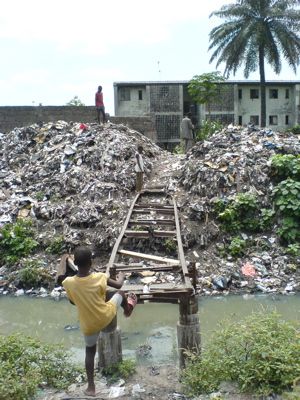





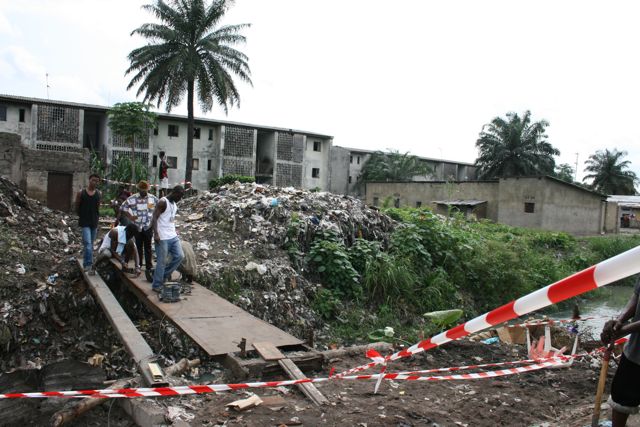
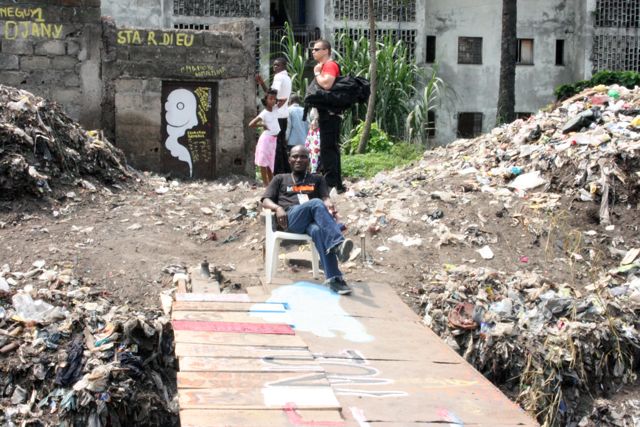
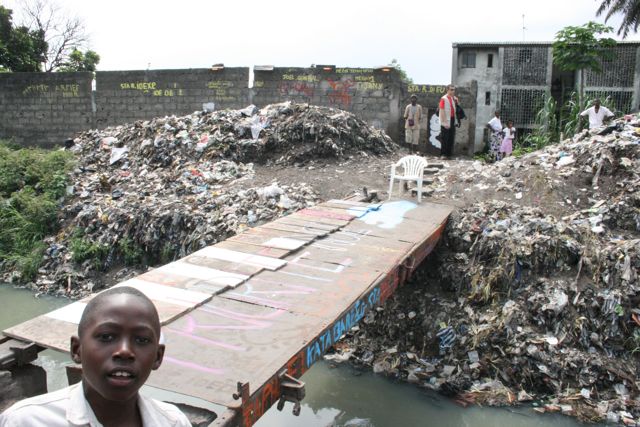
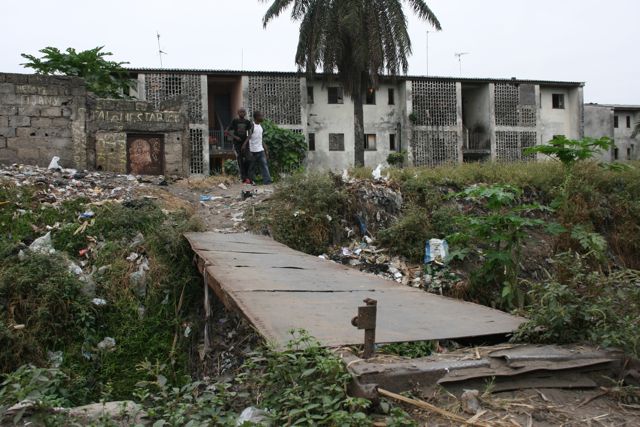
Vous devez être connecté pour poster un commentaire.